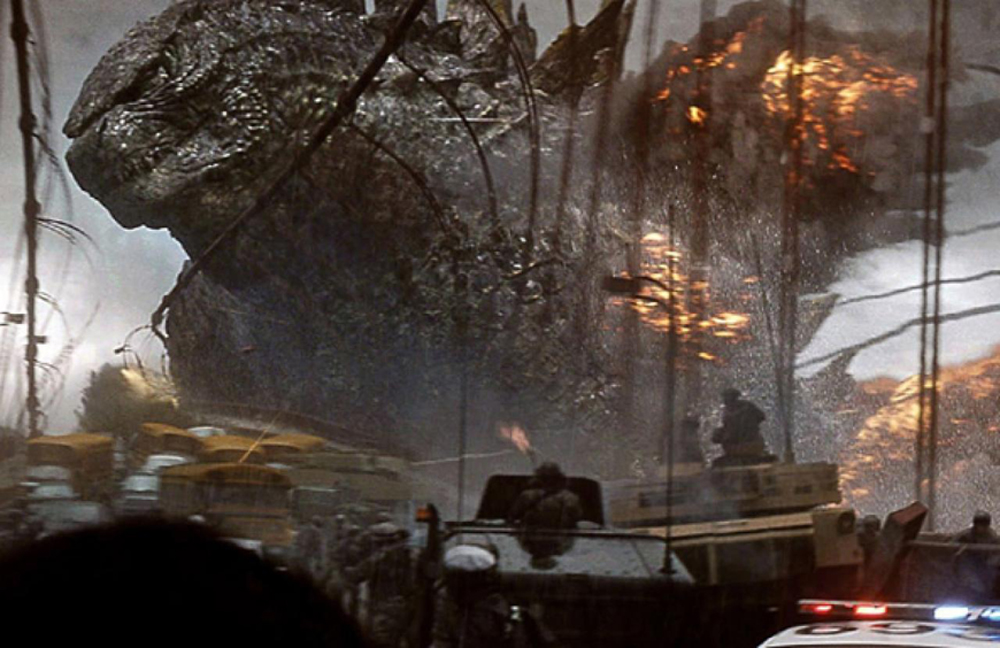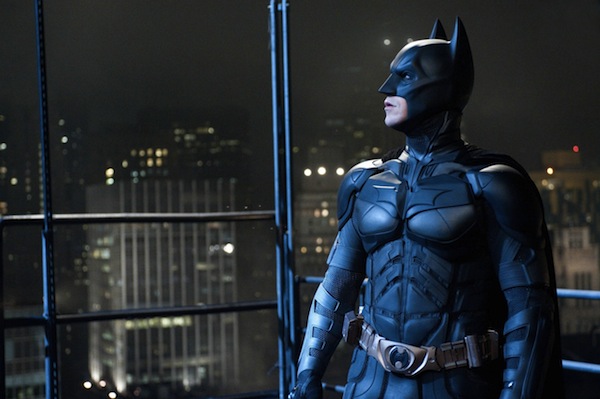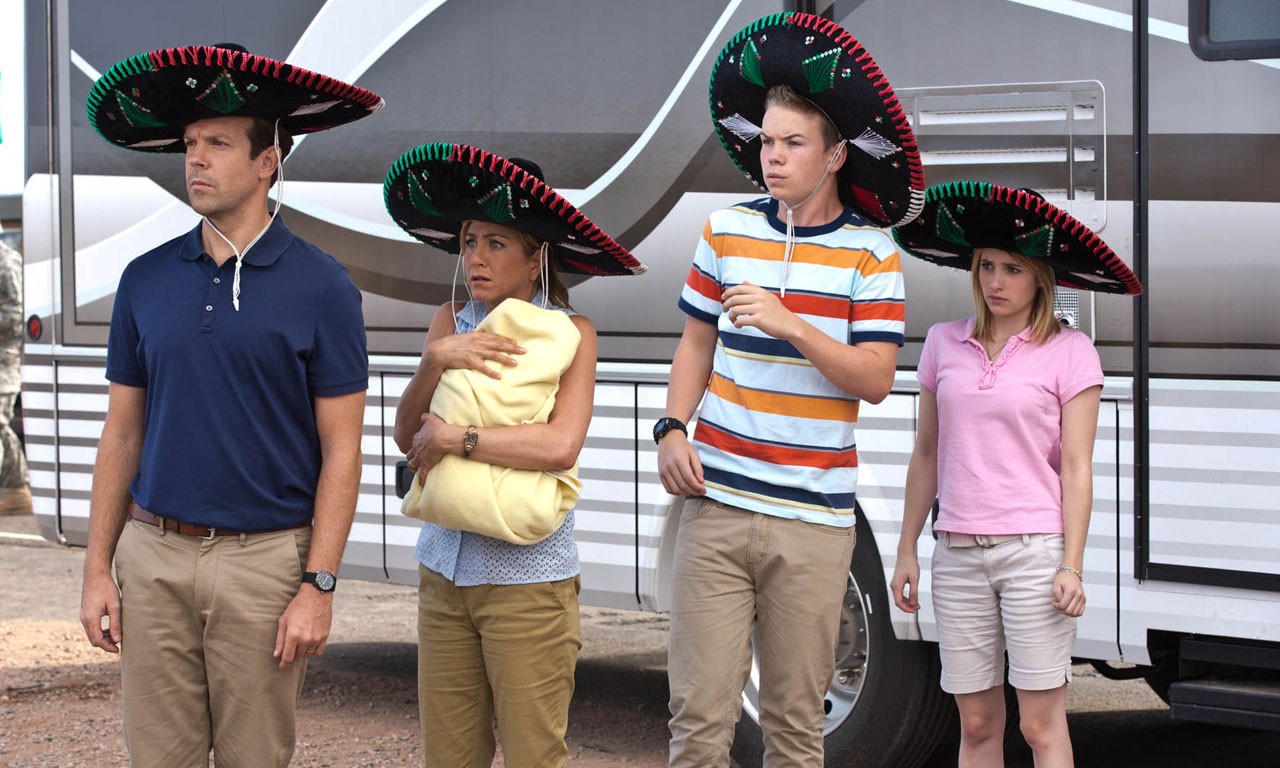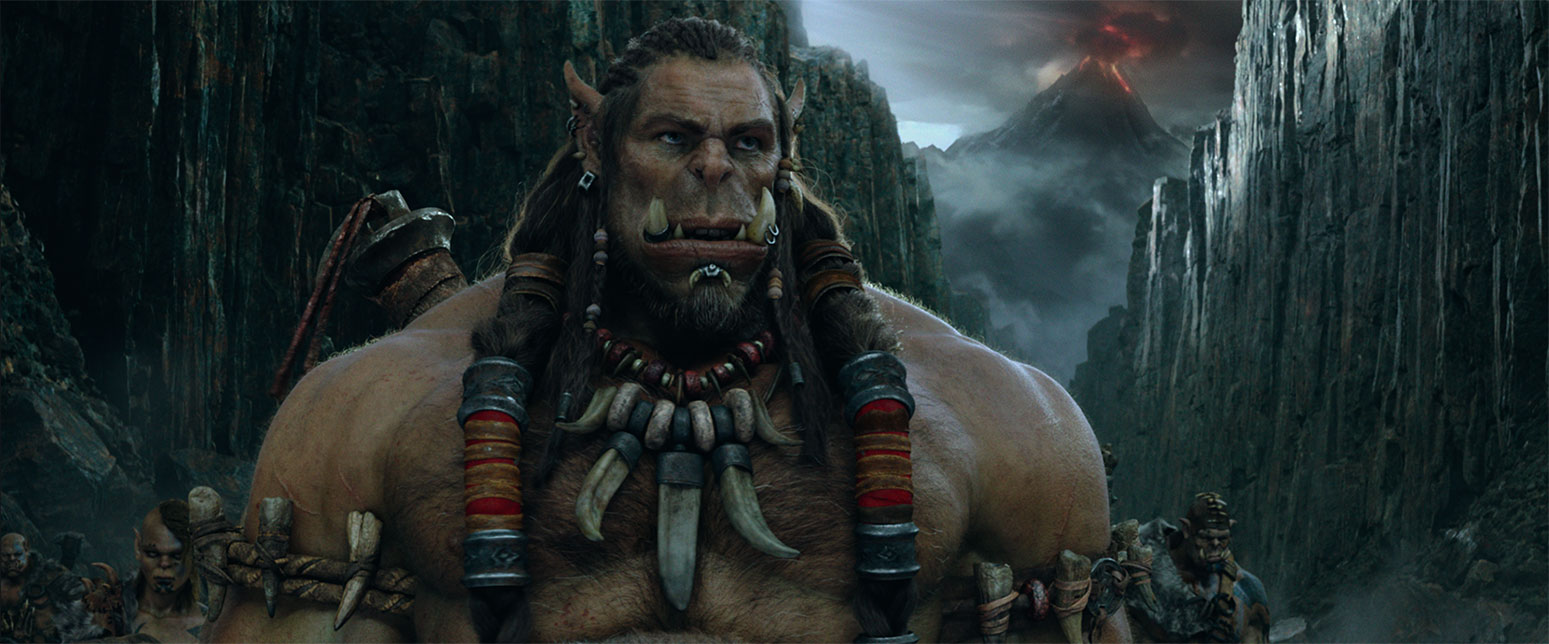1998 Godzilla is an abomination. It was directed by world-class hack Roland Emmerich (Independence Day, 10,000 B.C.) and starred Ferris Bueller and some other people. Emmerich was rolling in ID4 money and Jurassic Park momentum which helped him bankroll that nightmare behemoth. Unfortunately for America Emmerich got everything wrong about our favorite Toho lizard beast and turned the film into an incredibly expensive farce mixed with second rate Jurassic Park dinosaurs. We probably needed the 16-year gap to wipe our memories.
So let me say thank you to Legendary Pictures for tapping uber-talent Gareth Edwards to helm 2014 Godzilla. It’s a huge risk (by Hollywood standards) to give a project of this magnitude to a promising yet unproven talent (even if it’s the right choice.) But when the risk pays off you get a movie like this. In only his second feature (if you haven’t seen his first – Monsters – which he made for $500 on his laptop, find it on Netflix NOW) Edwards does so much to atone for the sins of 1998-zilla that it’s safe to say he should be given the keys to the Toho universe and run wild.
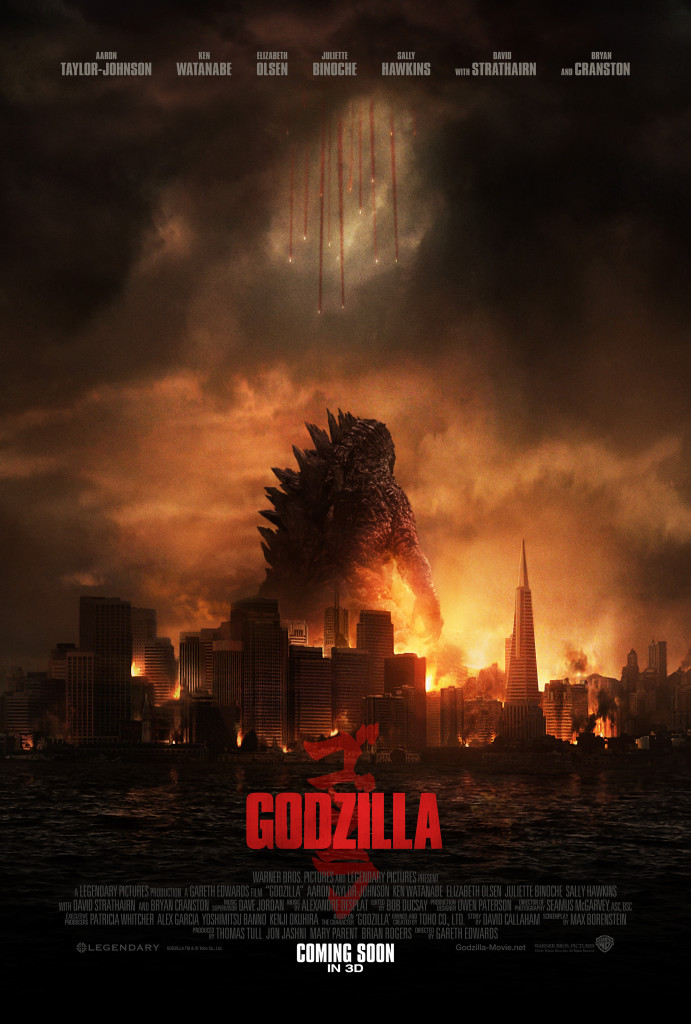 The film is an homage to the original as much as it is a re-imagining. Edwards took great care to create a realm of plausibility where Godzilla could exist while still maintaining the ridiculousness required in a modern summer blockbuster monster mash. Joe Brody (Bryan Cranston) and his wife Sandra (Juliette Binoche) are engineers at a nuclear power plant in Japan. They are investigating odd disturbances at the plant that many believe to be minor earthquakes but Joe suspects may be more sinister. After a catastrophic meltdown Joe continues his investigation, convinced the Japanese government is hiding something.
The film is an homage to the original as much as it is a re-imagining. Edwards took great care to create a realm of plausibility where Godzilla could exist while still maintaining the ridiculousness required in a modern summer blockbuster monster mash. Joe Brody (Bryan Cranston) and his wife Sandra (Juliette Binoche) are engineers at a nuclear power plant in Japan. They are investigating odd disturbances at the plant that many believe to be minor earthquakes but Joe suspects may be more sinister. After a catastrophic meltdown Joe continues his investigation, convinced the Japanese government is hiding something.
Meanwhile – as the decade passed – Joe’s son Ford (Aaron Taylor-Johnson) married Mary-Kate and Ashley’s sister and became a bomb technician. On his first night home from deployment Ford gets a call from Japan that his father has been arrested again, trespassing in the quarantine zone. Even before he can bed his super-gorgeous wife (seriously, who can get a flight that fast!?) he’s on a plane over the Pacific to retrieve his father and put his family back together.
That’s when the monsterin’ starts. And oh man, it’s some A+ monsterin. After Ford and Joe discover that the Japanese government has been hiding a massive radioactive spore all hell breaks loose. The spore reveals the first of two giant cockroach/bat monsters that must consume radiation to survive. The silly humans believe their modern weapons can bring down the beast but we know this is a job for one scaly-super predator. Just wait until you hear him roar.
When Godzilla hits the scene (well over an hour in) the film picks up stunning momentum. Edwards uses his medium to create the massive scale of the creatures and the hero shots awe-inspiring. He never employs the shaky-cam antics of a Michael Bay choosing to allow his camera to organically reveal monsters and mayhem. All the action is easy to follow and a blast to behold. One particular bravura sequence involves a squad of military jumping out of a plane to retrieve a warhead as Godzilla fends off beasts below. It may well be the seminal moment in action/adventure filmmaking of this past decade.
Unfortunately when the film hits the monster button the human actors take a backseat. Edwards tries his best to establish a relatable story but a combination of clunky dialogue and a wooden lead renders most of the emotion paper-thin. I quite enjoyed Aaron Taylor-Johnson as the real world superhero Kick-Ass but here he is sometimes painfully one-note. He has very little presence on screen in a role that requires us to care – even if it’s just for his well-being. Bryan Cranston on the other hand has far less screen time but owns each moment. I hope Cranston becomes a go-to actor in Hollywood post-Breaking Bad because his devotion to the material makes everything feel natural. Edwards also peppers the film with stalwart bit players including Ken Watanabe, Sally Hawkins and David Strathairn – all who easily elevate the silliness around them.
Edwards uses the original film as a template to great effect. Gone are the horrifying post-WWII undertones but they’ve been replaced with an interesting subtext about American Imperialism and our tendency to shoot first and ask questions later. He has fun toying with the idea of military might being way over-matched. What would we do if we couldn’t point a gun at the problem?
Godzilla may lack the levity of Independence Day or the depth of character of Jurassic Park but Edwards understands what we came for and delivers over-and-over again. Maybe Hollywood has found their next great talent. I hope so. If Edwards took the time to put this kind of care and effort into Godzilla, just imagine what he could do next.
PSA: See the movie in 2D. It’s already a dark movie and the 3D adds nothing.

